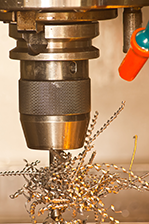Level 4 Diploma in Jewellery Manufacturing CAD/CAM

SQA code: GJ6T53
Ofqual code: 601/3221/8
Total Qualification Time: 1175
Guided Learning Hours: 1017
Credit value: 13
This qualification provides learners with the ability to critically evaluate the techniques, materials and tools associated with CAD/CAM in order to produce advanced items of jewellery or silverware. It has been developed in partnership with Creative and Cultural Skills to ensure it meets the needs of the industry.
The areas covered include:
- researching, developing and producing drawing plans for the manufacture of precious metal objects
- applying advanced knowledge of metallurgy to the manufacture of precious metal objects
- producing advanced designs for precious metal objects using CAD technology
- producing advanced prototypes for precious metal objects using CAM technology
This qualification may be available through employers, training providers and colleges in England and Wales.
Use the tabs below to open each section individually. Alternatively you can show all the sections.
Rationale and purpose of this qualification
Its primary purpose is to confirm the learner's occupational competence as a senior jewellery manufacturer or CAD/CAM designer. As a work-related, competence-based qualification it provides confirmation to employers, industry managers and card schemes that the learner has the skills and knowledge needed to meet the nationally recognised standard to carry out the role.
Learners who achieve this qualification can use it to gain employment, to progress in the industry, or to work towards another qualification (see Progression).
Objectives
The qualification is designed to meet the following objectives:
- supporting a role in the workplace
- meeting the needs of learners who already have some skills and knowledge in jewellery making and design drawing
- enabling learners to progress from the Level 3 Diploma in Jewellery Manufacture CAD/CAM
What does this qualification cover?
As this is a competence-based qualification, learners will be acquiring the knowledge and skills required through either on-the-job experience or in a learning environment.
To achieve the whole qualification, learners need a minimum of 118 credits. They must complete four mandatory units plus one optional unit from the qualification structure.
Who is this qualification for?
This qualification is suitable for:
- workers wishing to progress to a supervisory position
- learners who have completed a qualification in a relevant discipline at Level 3 or Level 4, eg Level 3 Diploma in Jewellery Manufacturing CAD/CAM, Level 3 Diploma in Jewellery and Silverware Manufacturing, or Level 4 Diploma in Jewellery and Silverware Manufacturing
- people in employment who wish to enhance their career prospects
- individuals who wish to start their own business
Entry
Entry to the qualification is at the discretion of the centre.
This qualification is mainly taken by individuals employed as a:
- jewellery production manager
- senior jewellery manufacturer
- senior precious metal caster
- senior jewellery CAD/CAM designer
Apprenticeships
This qualification is a mandatory component in the Higher Level 4 Apprenticeship in Jewellery Manufacturing and Silversmithing in England (as detailed in SASE).
Progression
Learners may progress from the Level 4 Diploma in Jewellery Manufacturing CAD/CAM to a wide range of degree programmes.
The Level 4 Diploma in Jewellery Manufacturing CAD/CAM can lead to employment within the jewellery manufacturing industry.
Deliver this qualification
Thinking of working with us?
- Our 3 step approval process
- Become an SQA approved centre
- Charges and Fees of SQA Qualifications in England and Wales
Existing customer?
Where can you take this course
Qualification structure
The qualification requires the learner to complete four mandatory units (credit value 98) and one optional unit (credit value 20).
Please refer to the qualification structure (64 KB) for more information.
How to assess
Ongoing course assessment will apply. Each unit specification gives detailed information on the assessment criteria, assessment (evidence) requirements and guidance on instruments of assessment for the unit.
The qualification is assessed by completing a portfolio of evidence which details what the learner has completed at work. This can be gathered through observation, professional discussion, witness testimony or supporting documentary evidence. The assessor can work alongside the learner to confirm that they have met the requirements of the qualification and that they are therefore competent in their role.
The assessment process will ensure that the learner can complete the tasks that they have been directed to undertake and that they can interpret the instructions correctly. They will demonstrate that they can select the appropriate resources for the tasks and can complete them within the given timescales and specifications.
Learner portfolio
Assessment strategy/principle
Related Information
Contact Information
- Candidate Enquiries
- 0345 279 1000
- Centre Enquiries
- 0303 333 0330
